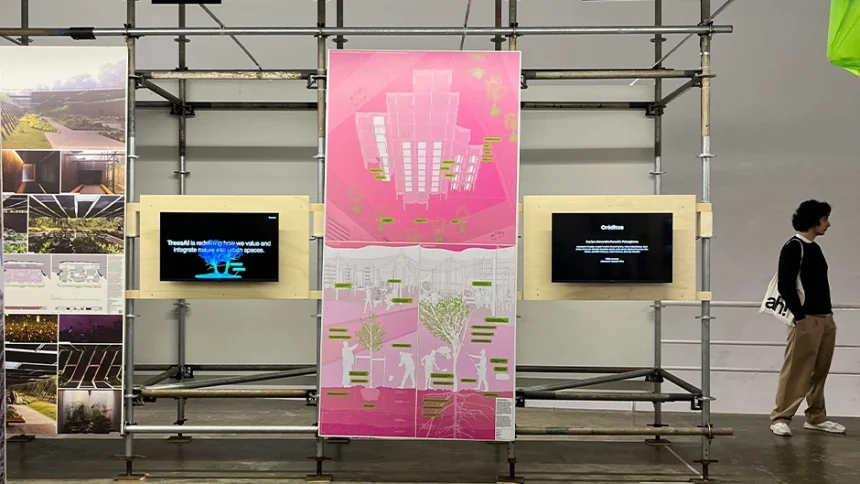Professor Lily Chishan Wong’s work explores the intersections of architecture, ecology, and community, examining how design can foster more sustainable and interconnected urban environments. Through recent projects presented on international stages, she continues to reimagine architecture’s role in responding to environmental and cultural transformation.
This year, Wong presents Cultivating Shade Equity: Shade Houses for Community Planting as part of the 2025 São Paulo International Architecture Biennale, themed Extremes: Architectures for an Overheated Planet. The urban distribution of tree canopy is often correlated to class and race. In Miami, for example, studies by environmental and policy scholars have demonstrated that poorer, racialized neighborhoods have fewer trees than affluent ones. Despite afforestation initiatives, two main problems have persisted in the past decade. First, municipalities can only plant trees in public-owned areas, which can be limiting in scope. Second, the lack of investment in tree maintenance results in “green wasting”– tree saplings do not always survive the first 5 to 10 years before they mature enough to provide effective canopies. In these decisive years, community engagement is crucial to establish systems of continuous care between humans and vegetal life.
This project addresses urban afforestation as both an environmental and socio-economic project, in which architecture can support a culture of reciprocal care between trees and people. It adapts botanical “shade house” structures ubiquitous in South Florida’s agri- and horticultural areas to the urban context. The interventions equip public and residual spaces with the temporary shade needed to support tree maintenance and articulate community engagements. The goal is to provide an architectural strategy for government-run programs such as tree giveaways, composting, and botanical education accessible by the public at little cost.
Wong’s interest in the relationship between design, energy, and cultural change also shaped her time as a 2025 Bauhaus Fellow with the Bauhaus Dessau Foundation in Germany.
Professor Lily Chishan Wong spent three months, from May 3 to July 31, in Dessau, Germany. The fellowship provided her with a studio space in the iconic Bauhaus building, designed by Walter Gropius and recognized as a UNESCO World Heritage site and an enduring symbol of modernism. Supported by German public cultural funding through the Stiftung Bauhaus Dessau, Wong joined seven other international, interdisciplinary fellows in exploring design’s historical and future trajectories.
Her research draws on Bauhaus archives to speculate on the “energy transition” of the early 20th century, when electricity replaced gas, reshaping homes, cities, landscapes, and social life. Wong examines the cultural values attached to brightness, the environmental consequences of coal-powered grids, and possibilities for today’s shift toward decentralized clean energy.
The fellowship culminates in After Modern Brightness: Ecologies of Light, an exhibition co-curated by the fellows, on view from July 31, 2025, to March 1, 2026, at the Bauhaus Dessau Foundation. The exhibition features archival documents, historic objects, and new multimedia works, including Wong’s aluminum light box and video installation. A symposium accompanies the opening, with a publication to follow in 2026.
Through both her Biennale project and her Bauhaus fellowship, Professor Wong continues to explore how architecture mediates the relationships between climate, culture, and community, illuminating pathways toward more connected and resilient urban futures.











